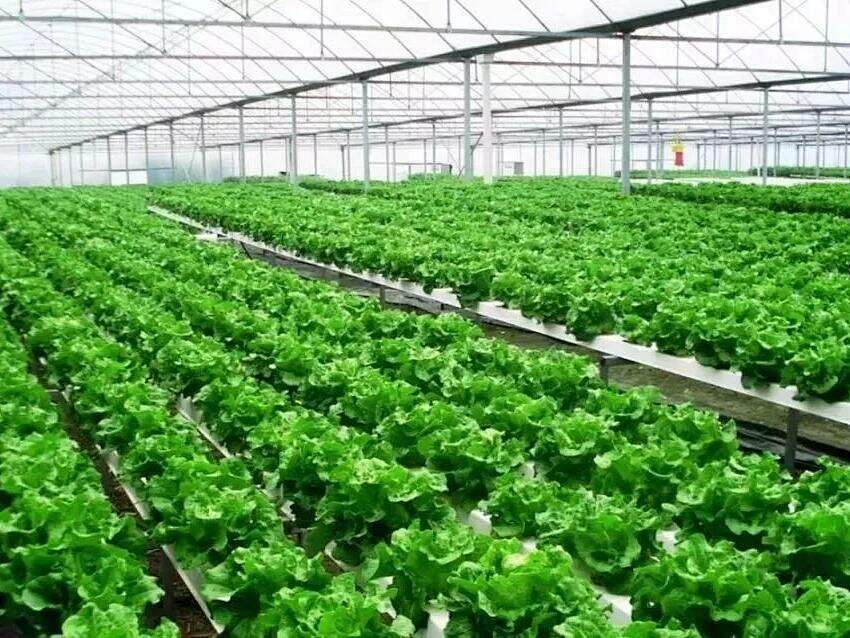Extended Growing Seasons and Year-Round Crop Production
Overcoming Seasonal Limitations in Rural Agriculture
Traditional open-field farming in rural areas often faces 3-4 month productivity gaps due to frost and temperature swings, with winter frost damage reducing annual yields by 15–60% in northern regions (AgriTech Report 2023).
How a Countryside Greenhouse Enables Off-Season Growing
By implementing high-tunnel greenhouse structures, farmers maintain baseline temperatures 6–8 weeks beyond natural growing seasons without fossil fuel dependence. This creates viable conditions for cool-weather crops like kale and spinach through winter months.
Case Study: Off-Season Tomato Production in Northern Climates
A Wisconsin operation using passive solar design achieved 11-month tomato harvests at 54°N latitude, yielding 38% more marketable fruit than field-grown equivalents (USDA Case Study 2023). Their key innovation: combining thermal mass walls with adjustable shade cloths.
Optimizing Light and Temperature for Longer Harvest Cycles
Diffused polycarbonate panels increase light penetration by 22% compared to glass, while automated thermal curtains retain 85% of daytime heat–critical for overnight frost prevention in early spring plantings.
Growing Trend: Adoption of Protected Cropping in Rural Farms
Over 27% of Midwestern vegetable growers have added season-extending greenhouses since 2020, driven by restaurants requiring year-round local ingredients (Farm Journal Survey 2024).
Precise Microclimate Control for Optimal Plant Growth
Challenges of Climate Instability in Open-Field Rural Farming
Traditional open-field farming faces increasing threats from erratic weather patterns, with 74% of crop losses in rural areas traced to temperature swings and drought conditions (2025 Thermal Science study). Uncontrolled humidity levels expose plants to fungal outbreaks, while heatwaves reduce photosynthesis efficiency by up to 40% in critical growth phases.
Regulating Temperature and Humidity in a Countryside Greenhouse
Modern greenhouses enable ±0.75°C temperature accuracy and ±3.55% humidity stability–parameters proven to maximize nutrient absorption in leafy greens and berries. High-pressure misting systems achieve these conditions using 55% less water than traditional irrigation, atomizing moisture into 5–15 micron droplets for rapid evaporation and cooling.
Case Study: Premium Strawberry Quality Through Climate Management
A Northern European operation maintained 22°C daytime temperatures and 85% humidity during fruiting phases, boosting strawberry Brix levels by 19% and shelf life by 8 days. The result was a 92% Grade-A yield, compared to 68% in open-field counterparts.
IoT Sensors and Real-Time Monitoring in Greenhouse Environments
Leading operations deploy wireless sensor arrays tracking:
| Parameter | Measurement Frequency | Ideal Range |
|---|---|---|
| Soil EC | Every 15 minutes | 1.2–2.5 dS/m |
| Leaf Surface Temp | Every 30 minutes | 18–24°C |
| CO₂ Concentration | Continuously | 800–1200 ppm |
These systems feed data into AI-powered predictive models that anticipate pest risks 14 days in advance with 89% accuracy.
Automating Ventilation and Irrigation Based on Environmental Data
Integrated control modules adjust roof vent openings in 2°C increments, fogging duration based on VPD (Vapor Pressure Deficit), and nutrient dosing aligned with real-time pH fluctuations. A 2025 study showed farms using automated climate protocols reduced energy costs by 33% while increasing annual harvest cycles from 2.7 to 4.1 in temperate zones.
Superior Pest and Disease Protection in Protected Cropping Systems
Rising Pesticide Use in Traditional Field Crops
Open-field agriculture faces escalating pesticide reliance, with chemical applications increasing 18% globally since 2018 to combat resistant pests (FAO 2023). Countryside greenhouses counter this trend through structural protections that minimize pest entry while enabling integrated pest management systems combining biological controls with targeted treatments.
How Physical Barriers Reduce Pest Infestations in a Countryside Greenhouse
Double-layered doors, 50-mesh insect screens, and positive-pressure ventilation systems physically block 85–90% of common pests like aphids and thrips. These defenses allow operators to reduce corrective pesticide use by 60–75% compared to conventional farms while maintaining stricter sanitation standards.
Case Study: Organic Bell Pepper Farm Cuts Infestations by 75%
A Texas greenhouse operation transitioning from open-field growing reduced whitefly infestations from 40% to 9% of crops within two seasons. This 77% decline enabled complete elimination of synthetic pesticides while achieving USDA Organic certification–translating to 28% higher wholesale pricing.
Balancing Biocontrol and Minimal Synthetic Inputs
Progressive growers deploy predator insects like Amblyseius swirskii alongside botanical pesticides derived from neem oil. This approach suppresses spider mites and fungal gnats without disrupting pollinators, maintaining ecological balance within closed environments.
Integrated Pest Management Strategies in Greenhouse Farming
IoT-enabled humidity sensors and automated spray systems help implement four-stage IPM protocols:
- Preventive sanitation and pest-resistant cultivars
- Biweekly beneficial insect releases
- Localized applications of mycoinsecticides
- Emergency pyrethrin treatments only at economic thresholds
This layered strategy reduces pesticide runoff by 92% compared to calendar-based spraying in open fields.
Higher Crop Yields, Quality, and Market Competitiveness
Meeting Demand for Consistent, High-Quality Local Produce
Countryside greenhouses empower farmers to deliver uniform, premium-grade crops year-round–a critical advantage as consumers prioritize locally grown, fresh produce. Controlled environments eliminate weather-related defects, ensuring 95% of crops meet retail-grade size and appearance standards, compared to 65–75% in open-field systems.
Optimized Growing Conditions Boost Yield and Uniformity
Precise management of light intensity (800–1,200 µmol/m²/s), humidity (60–80% RH), and CO₂ levels (1,000–1,500 ppm) accelerates photosynthesis while minimizing stress-induced yield losses. These conditions enable 18–24 annual harvest cycles for leafy greens versus 4–6 in traditional farming.
Case Study: 40% Increase in Leafy Greens Production Under Greenhouse
A Midwest farming cooperative achieved a 40% yield boost for kale and spinach through automated climate controls and strategic crop rotation. The operation reduced grading losses by 62% while meeting organic certification requirements–key factors in securing premium pricing from regional grocery chains.
Vertical Farming Trends in Rural Greenhouse Operations
Stacked hydroponic systems now enable rural operations to achieve 3.8x higher productivity per square foot compared to single-layer setups. This space-efficient approach helps small-scale farmers compete with industrial agricultural producers.
Hydroponic Systems for Maximum Productivity in a Countryside Greenhouse
Closed-loop hydroponic configurations reduce water consumption by 85–90% while delivering 30% faster crop maturation times. Nutrient film technique (NFT) systems have proven particularly effective for tomatoes and herbs, achieving 98% nutrient uptake efficiency.
Economic Benefits and Long-Term Resilience of Rural Greenhouses
Greenhouse Farming as a Profitable Alternative for Small-Scale Farmers
Small scale farmers can find a more stable source of income through countryside greenhouses since they aren't so dependent on unpredictable weather patterns or fluctuating market prices for their crops. Greenhouse farming actually allows for about six to eight harvests each year compared to just one or two when growing outside traditionally according to recent AgriTech findings from last year. The consistent returns from greenhouse work is drawing in younger people who might otherwise avoid going into agriculture altogether. We're seeing this trend clearly because right now around seventy two percent of those running farms are actually over fifty five years old as per USDA data released in 2023. So there's definitely something appealing about having reliable yields that keeps attracting new faces back to rural farming communities.
Higher Margins from Off-Season and Premium-Quality Harvests
By leveraging controlled environments for off-season production, growers bypass price slumps during seasonal gluts. A 2023 Cornell study found greenhouse-grown lettuce commands 38% higher wholesale prices in winter months compared to field-grown equivalents. Coupled with 20–30% reduced water usage through automated irrigation systems, profit margins often double within 3 years.
Case Study: Family-Owned Greenhouse Doubles Annual Revenue
The Henderson Farm in Minnesota transitioned from 40 acres of open-field corn to a 2-acre countryside greenhouse specializing in heirloom tomatoes. Results over 24 months:
| Metric | Before Greenhouse | After Greenhouse | Change |
|---|---|---|---|
| Annual Revenue | $180k | $378k | +110% |
| Labor Costs | $76k | $52k | -31.6% |
| Crop Loss from Pests | 22% | 4% | -81.8% |
Government Subsidies Supporting Countryside Greenhouse Expansion
Over $740 million in federal grants (2024 AgriTech Grant Index) now target rural greenhouse projects that demonstrate energy efficiency and local job creation. Michigan’s “Growing Under Glass” program alone funded 127 greenhouse installations in 2023, creating 900+ year-round agricultural positions in economically distressed counties.
FAQ
What are the benefits of using greenhouses in rural agriculture?
Greenhouses in rural agriculture extend the growing season, protect against pests and climate variability, and help maintain consistent high-quality crop yields throughout the year.
How do greenhouses manage to grow crops off-season?
Greenhouses use structures like high-tunnel greenhouses to regulate temperature and humidity, creating optimal growing conditions even outside of the natural growing seasons.
What technologies are used inside greenhouses to support crop growth?
Greenhouses may utilize IoT sensors, automated irrigation, temperature and humidity regulators, and AI-powered predictive models to enhance growth conditions and monitor for pests effectively.
Are there economic benefits to transitioning from field farming to greenhouse farming?
Yes, greenhouse farming can yield higher margins by producing premium-quality crops off-season, thus attracting higher prices and reducing crop losses through better control of the growing environment.
What support is available for farmers looking to switch to greenhouse farming?
Farmers may have access to federal grants and state programs offering financial support for energy-efficient and job-creating greenhouse projects.
Table of Contents
- Extended Growing Seasons and Year-Round Crop Production
-
Precise Microclimate Control for Optimal Plant Growth
- Challenges of Climate Instability in Open-Field Rural Farming
- Regulating Temperature and Humidity in a Countryside Greenhouse
- Case Study: Premium Strawberry Quality Through Climate Management
- IoT Sensors and Real-Time Monitoring in Greenhouse Environments
- Automating Ventilation and Irrigation Based on Environmental Data
- Superior Pest and Disease Protection in Protected Cropping Systems
-
Higher Crop Yields, Quality, and Market Competitiveness
- Meeting Demand for Consistent, High-Quality Local Produce
- Optimized Growing Conditions Boost Yield and Uniformity
- Case Study: 40% Increase in Leafy Greens Production Under Greenhouse
- Vertical Farming Trends in Rural Greenhouse Operations
- Hydroponic Systems for Maximum Productivity in a Countryside Greenhouse
- Economic Benefits and Long-Term Resilience of Rural Greenhouses
-
FAQ
- What are the benefits of using greenhouses in rural agriculture?
- How do greenhouses manage to grow crops off-season?
- What technologies are used inside greenhouses to support crop growth?
- Are there economic benefits to transitioning from field farming to greenhouse farming?
- What support is available for farmers looking to switch to greenhouse farming?


